The Impact of Second-hand Smoking on Your Family’s Health and Effective Strategies for Quitting
Smoking cigarettes not only harms your own health but also poses significant risks to the well-being of everyone in your household. Each time you light up, your family members inhale both mainstream smoke (exhaled by a smoker) and sidestream smoke (wafting off the burning cigarette). Even if they don’t smoke themselves, they can experience similar health problems to those caused by direct smoking. Additionally, exposure to second-hand smoke can have severe consequences for your children and your partner, affecting their overall health and increasing the risk of various illnesses.
Effects on Children’s Health:
Passive smoking, or exposure to second-hand smoke, can be particularly detrimental to the health of infants and young children, who are often unable to avoid the harmful effects. Babies, in particular, are more vulnerable as they have a faster breathing rate and are at a crucial developmental stage. Consequently, your smoking habit can lead to several health issues in your children, including a higher risk of Sudden Infant Death Syndrome (SIDS), increased rates of respiratory illnesses such as colds, coughs, bronchitis, bronchiolitis, and pneumonia, ear infections due to the buildup of fluid in the middle ear, early onset and more severe asthma, and an elevated risk of childhood cancers like leukemia, brain cancer, and lymphomas (especially if the mother smoked during pregnancy). Moreover, as a role model, your smoking behavior increases the likelihood of your children becoming tobacco addicts themselves, perpetuating the cycle of nicotine addiction.
Impact on Your Partner’s Health:
Even if your partner has never smoked, their health can be compromised by second-hand smoke exposure, which can be frustratingly unfair. Your loved one faces an elevated risk of developing serious health problems, including coronary heart disease, heart attacks, and strokes due to the narrowing of arteries and increased clotting risk caused by tobacco smoke. Prolonged exposure to second-hand smoke also raises the chances of developing lung cancer by up to 30% and increases the risk of other types of cancer and respiratory problems.
Ensuring a Smoke-Free Environment:
To safeguard the health of your family, it is essential to establish smoke-free zones in your home and car. Avoid smoking indoors and kindly request that guests refrain from smoking while visiting. Even smoking near a window does not prevent the harmful effects, as smoke lingers in a room for several hours. The residue left behind, known as third-hand smoke, can adhere to clothes, furniture, floors, walls, and even toys. Regularly vacuuming your house and car and washing all your clothes helps eliminate these remnants. Ultimately, quitting smoking altogether is the best solution to protect your family’s health.
The Role of Vaping as an Alternative:
Considering the potential health risks associated with smoking, many individuals turn to vaping as an alternative. While it is crucial to note that vaping is not entirely risk-free, numerous studies suggest that it is a safer option compared to smoking due to the absence of combustion. According to Public Health England, vapor from e-cigarettes is free from 95% of the toxic chemicals found in tobacco smoke. Consequently, second-hand vapor poses a significantly lower risk to your family’s health compared to second-hand tobacco smoke.
Examining Vape Juice Ingredients:
E-liquids used in vaping primarily consist of Propylene Glycol (PG) and Vegetable Glycerine (VG). The safety of these ingredients when inhaled is a subject of ongoing debate among health experts. Although PG and VG are commonly used in food, medical, and pharmaceutical products, some experts raise concerns about their inhalation safety. Nevertheless, there is currently no evidence suggesting that vape juice flavors cause specific diseases in vapers, although further research is needed to fully explore the potential risks. It is important to acknowledge that e-cigarettes and vape flavors are relatively new products on the market, and the long-term effects of their use are still unknown. However, it is worth noting that many smokers who have transitioned to vaping have reported experiencing certain health benefits.
Can Vaping Aid in Smoking Cessation?
Quitting smoking involves more than just refraining from lighting up. It can be a challenging process due to nicotine addiction and the accompanying withdrawal symptoms that typically arise within 30 minutes of the last cigarette and peak after 2 to 3 days of quitting. Unfortunately, many individuals who have successfully quit smoking may find themselves returning to the habit after months of living smoke-free.
One of the reasons for this challenge is the established routine and schedule associated with smoking. Smokers often have designated smoke breaks and specific moments, such as enjoying a cup of coffee or socializing at parties, where the urge to smoke may arise. Additionally, managing moods and coping with stress can be difficult without the familiar ritual of smoking.
Here is where vaping can be beneficial. E-cigarettes and vape liquids contain nicotine, which helps alleviate withdrawal symptoms. Whenever you feel the urge to light up, you can turn to vaping as a substitute. The process and sensations of vaping mimic smoking, providing a sense of enjoyment and satisfaction similar to traditional cigarettes. By incorporating vaping into your smoking cessation journey, you can navigate the challenges of quitting while still managing nicotine cravings.
Prioritizing Your Family’s Health:
As a responsible and caring individual, you undoubtedly strive to keep your family happy and healthy. Quitting smoking is not only a significant personal sacrifice but also a proactive step toward safeguarding the well-being of your loved ones. By eliminating second-hand smoke exposure, you reduce the risk of numerous health problems for your children and partner. Moreover, quitting smoking sets a positive example for your children, decreasing the likelihood of them picking up the habit and becoming tobacco addicts themselves.

Second-Hand Smoking and How It Affects Your Family
How Dangerous is Second-Hand Smoke?
Tobacco smoke consists of more than 4,000 chemicals. About 70 of them are carcinogens (cause cancer). And all of them have varying degrees of toxicity. For example, Cyanide has been used as a poison for centuries, Ammonia is an ingredient of household cleaning products, and Cadmium is a toxic heavy metal commonly used in batteries.
Second-hand smoke, also known as environmental tobacco smoke (ETS), is a combination of the smoke exhaled by a smoker (mainstream smoke) and the smoke that comes from the burning end of a cigarette (sidestream smoke). It contains thousands of chemicals, including more than 70 known to cause cancer. Second-hand smoke is a serious health hazard and can have detrimental effects on both children and adults who are exposed to it.
The dangers of second-hand smoke include:
- Increased risk of respiratory problems: Breathing in second-hand smoke can irritate and damage the respiratory system. It can cause or exacerbate respiratory conditions such as asthma, bronchitis, pneumonia, and bronchiolitis. Children exposed to second-hand smoke are at a higher risk of developing these respiratory illnesses.
- Cardiovascular effects: Second-hand smoke has immediate harmful effects on the cardiovascular system. It can increase the risk of heart disease, heart attacks, and strokes. The chemicals in the smoke can damage blood vessels, restrict blood flow, and promote the formation of blood clots.
- Increased risk of cancer: Second-hand smoke contains numerous carcinogens, which are substances that can cause cancer. Prolonged exposure to second-hand smoke can increase the risk of developing lung cancer, as well as cancers of the throat, mouth, nasal cavity, bladder, breast, and other organs.
- Negative impact on children’s health: Children exposed to second-hand smoke are particularly vulnerable to its effects. They have a higher risk of Sudden Infant Death Syndrome (SIDS), respiratory infections, ear infections, and impaired lung function. Second-hand smoke can also affect their cognitive development and increase the likelihood of behavioral problems.
- Aggravation of existing health conditions: Individuals with pre-existing health conditions, such as asthma, allergies, or cardiovascular diseases, can experience worsened symptoms and increased complications when exposed to second-hand smoke.
It is important to note that there is no safe level of exposure to second-hand smoke. Even brief exposure can have immediate adverse effects on health. The risks associated with second-hand smoke apply to both indoor and outdoor environments, although the concentration of smoke may be higher indoors.
To protect yourself and your loved ones from the dangers of second-hand smoke, it is crucial to create smoke-free environments at home and in public spaces. Implementing comprehensive smoke-free policies, promoting smoking cessation, and educating individuals about the risks of second-hand smoke are essential steps in reducing exposure and promoting a healthier society.
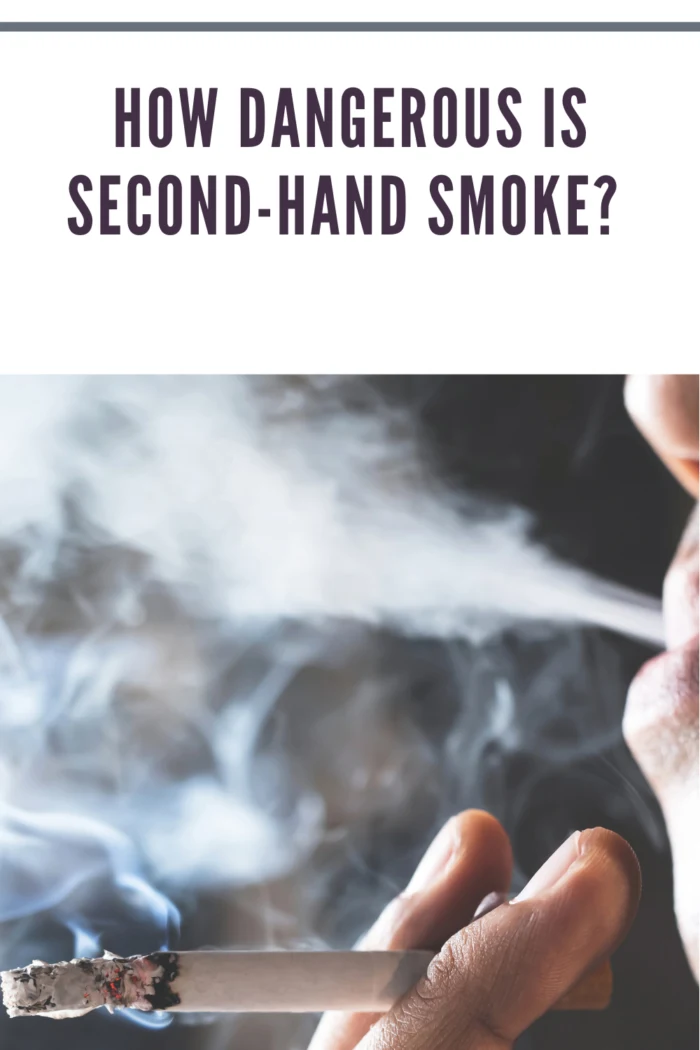
How Does Passive Smoking Harm Your Children?
Do you have kids? Puffing on a cancer stick indoors or near them increases their health risk. Those who understand it, choose to vape as typical e-cig juice is considered to be much safer, says Vaping Daily. Vaporizing herbs with a herb vape pen can help you inhale less tar and carcinogens compared to cigarettes.
Infants are most likely to be exposed to cigarette smoke at home. They can’t leave a smoky room that makes it harder for them to avoid the exposure. Moreover, babies inhale more second-hand smoke as they tend to breathe faster than older children and adults.
Young ones are extremely susceptible to the negative effects of passive smoking as they are at a developmental stage and their bodies can be easily damaged.
Passive smoking, also known as second-hand smoke exposure, can have severe health consequences for children. Infants and children are particularly vulnerable to the harmful effects of second-hand smoke due to their developing bodies and respiratory systems.
Here are some ways in which passive smoking can harm your children:
- Increased risk of Sudden Infant Death Syndrome (SIDS): Babies exposed to second-hand smoke have a higher risk of SIDS, which is the sudden, unexplained death of an otherwise healthy infant. The risk of SIDS is approximately two times higher in babies who live with smoking parents compared to those who live in smoke-free environments.
- Respiratory illnesses: Children exposed to second-hand smoke are more likely to experience respiratory problems, including frequent colds, coughs, bronchitis, bronchiolitis, and pneumonia. The chemicals in tobacco smoke can irritate and inflame the airways, making children more susceptible to respiratory infections.
- Ear infections: Second-hand smoke can increase the incidence of ear infections in children. The chemicals and toxins in the smoke can cause inflammation and fluid buildup in the middle ear, leading to recurrent ear infections.
- Asthma: Exposure to second-hand smoke can worsen existing asthma symptoms in children and increase the risk of developing asthma. Children who are exposed to tobacco smoke may experience more frequent and severe asthma attacks, requiring more intense and prolonged treatment.
- Impaired lung function and development: Second-hand smoke can hinder the normal growth and development of children’s lungs. It can lead to reduced lung function, decreased lung capacity, and impaired respiratory health throughout their lives.
- Increased risk of childhood cancers: Children exposed to second-hand smoke, particularly during pregnancy or early childhood, have a higher risk of developing certain types of childhood cancers. These may include leukemia, brain cancer, and lymphomas.
It is crucial to create a smoke-free environment for children to protect them from the harmful effects of second-hand smoke. This includes not smoking inside the house or car, as well as avoiding exposure to smoke in public places. By doing so, you can significantly reduce the risks to your children’s health and promote a healthier and safer living environment for them.
There’s one more thing you should know. Your children are more likely to take up smoking themselves as you are their role model. No parent wants their children to get caught on the hook of nicotine. So, the sooner you give up this useless habit, the smaller the likelihood of your children becoming tobacco addicts.
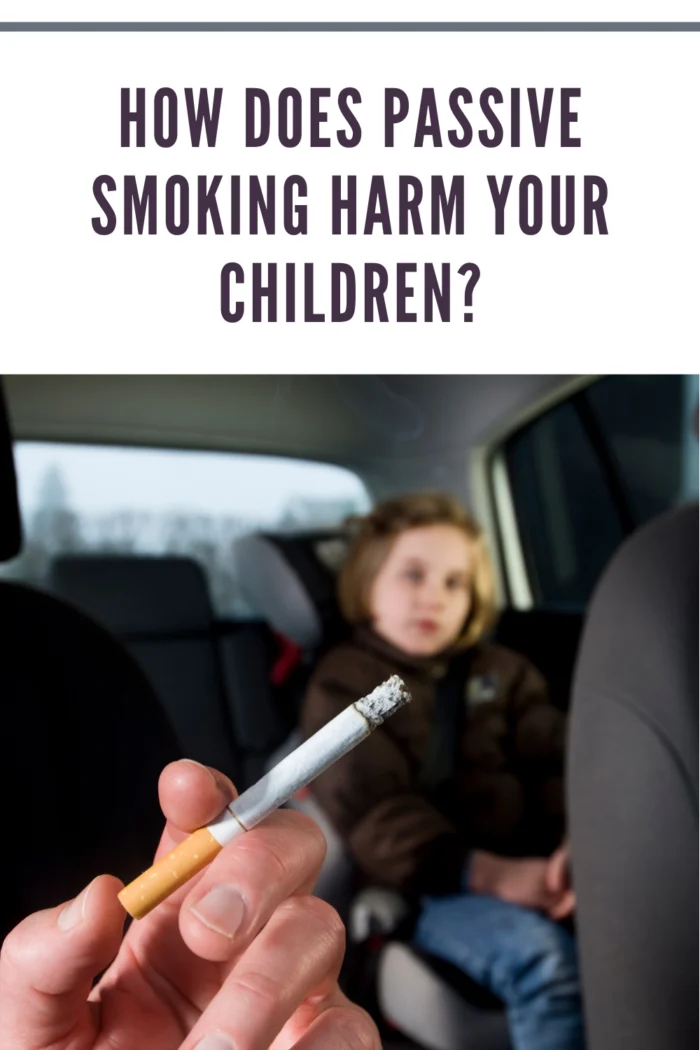
How Does Passive Smoking Harm Your Partner?
Even if your partner has never smoked, he/she can get ill with any of the diseases that threaten you, says Better Health. Don’t you find it unfair? According to Medical News, second-hand smoke exposure puts your beloved person at a greater risk of such serious health problems as: coronary heart disease, including heart attack and stroke – tobacco smoke affects blood vessels, narrows the arteries, and raises the risk of unwanted blood clots; lung cancer – prolonged passive smoking increases the chances of developing this type of cancer up to 30%; other types of cancer; respiratory problems.
Passive smoking, or second-hand smoke exposure, can also harm your partner’s health. Even if your partner is a non-smoker, being exposed to second-hand smoke puts them at risk for various health problems.
Here are some ways in which passive smoking can harm your partner:
- Increased risk of cardiovascular diseases: Second-hand smoke contains harmful chemicals that can negatively affect the cardiovascular system. Regular exposure to second-hand smoke can increase your partner’s risk of developing cardiovascular diseases, including coronary heart disease, heart attacks, and strokes. The chemicals in the smoke can damage blood vessels, restrict blood flow, and contribute to the formation of blood clots.
- Increased risk of lung cancer: Prolonged exposure to second-hand smoke can increase your partner’s risk of developing lung cancer. The carcinogens present in tobacco smoke can be inhaled by your partner, damaging lung tissue and potentially leading to the development of cancer over time.
- Increased risk of other types of cancer: Second-hand smoke is not only linked to lung cancer but also associated with an increased risk of other types of cancer. This includes cancers of the throat, mouth, nasal cavity, bladder, breast, and other organs. Continuous exposure to the carcinogens in second-hand smoke can contribute to the development of these cancers in your partner.
- Respiratory problems: Your partner may experience respiratory problems due to exposure to second-hand smoke. It can cause irritation of the airways, coughing, wheezing, and exacerbation of respiratory conditions such as asthma or chronic obstructive pulmonary disease (COPD). Second-hand smoke can worsen existing respiratory symptoms and increase the risk of respiratory infections.
- Other health effects: Second-hand smoke exposure can also contribute to other health issues in your partner, including an increased risk of allergies, sinus problems, and eye irritation. It can also worsen symptoms of existing health conditions, such as allergies or respiratory disorders.
To protect your partner’s health, it is important to create a smoke-free environment and avoid smoking around them. Establishing a smoke-free home and car, as well as advocating for smoke-free public spaces, can significantly reduce your partner’s exposure to second-hand smoke and lower their risk of associated health problems. Quitting smoking altogether is the most effective way to protect both your partner and yourself from the harmful effects of tobacco smoke.
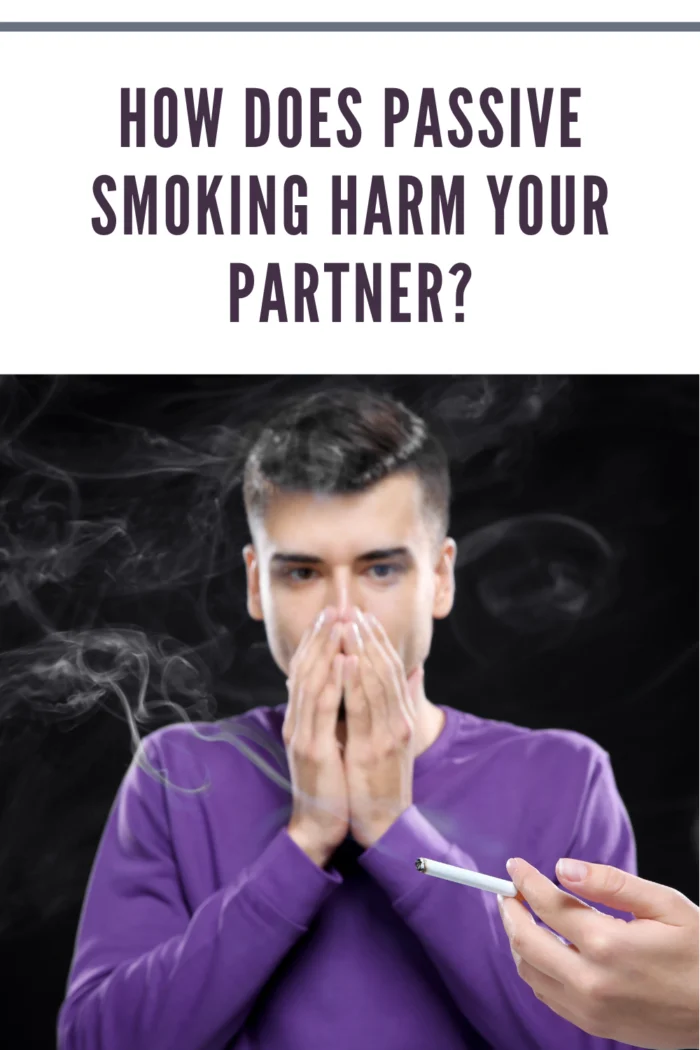
How to Keep Your Family Safe from Second-Hand Smoke Exposure?
Your home and car must be no-smoking zones. Don’t smoke indoors. Ask guests not to smoke in the house during their visit. The problem is that smoke, even from one cigarette, stays in a room for several hours, even if you smoke near the window and try to exhale in its direction. Many of the dangerous substances cling to your clothes, furniture, floor, walls, and toys. It’s called third-hand smoke. Get rid of that cigarette residue by vacuuming your house and car and washing all of your clothes. Obviously, the best solution to the problem would be quitting smoking. Is vaping an appropriate option for a person who worries about the health of their whole family?
To keep your family safe from second-hand smoke exposure, it is essential to take proactive measures and create a smoke-free environment.
Here are some steps you can take:
- No smoking indoors: Make your home a smoke-free zone. Strictly prohibit smoking inside the house, including all rooms and common areas. Encourage family members and visitors to go outside if they need to smoke.
- Establish smoke-free rules: Clearly communicate and enforce smoke-free rules within your household. Make it known that smoking is not allowed inside the house or in any enclosed spaces, such as cars or other vehicles.
- Educate family members: Ensure that all family members, especially children, understand the risks and dangers of second-hand smoke. Educate them about the health consequences and encourage open discussions about the topic.
- Support smoking cessation: If you or any family member is a smoker, consider quitting smoking for the well-being of your entire family. Seek support from healthcare professionals, smoking cessation programs, or support groups to help you quit successfully.
- Encourage guests to respect smoke-free policies: When hosting guests or visitors, politely request that they refrain from smoking inside the house or any other designated smoke-free areas. Provide alternative smoking areas outside the premises if necessary.
- Ventilate indoor spaces: Improve the ventilation in your home by opening windows or using exhaust fans. This can help remove residual smoke particles and reduce the concentration of harmful substances in the air.
- Be cautious in public spaces: When in public areas, choose venues that have strict smoke-free policies. Avoid areas where smoking is allowed, such as designated smoking sections in restaurants or public events.
- Clean and remove smoke residue: Regularly clean your home, especially surfaces that may accumulate smoke residue, such as walls, furniture, curtains, and carpets. Wash clothes, bedding, and soft furnishings regularly to remove lingering smoke smells.
- Lead by example: As a parent or guardian, be a positive role model by not smoking and demonstrating a smoke-free lifestyle. Your actions and choices influence the behavior of your children and family members.
Remember, even minimal exposure to second-hand smoke can be harmful. By implementing these measures, you can significantly reduce the risks associated with second-hand smoke and create a healthier environment for your family.

How Safe is Vaping?
It seems that vaping has as many advocates as haters. Let’s be objective. We cannot say that vaping is totally safe. However, most studies show that it is safer than smoking due to the absence of combustion in the process. Public Health England reported that vapor is free from 95% of the toxic chemicals present in tobacco smoke. According to US News, second-hand vapor won’t be as hazardous to your family as tobacco. Does that mean that it’s time to rush for premium vape juice? E-liquids are made mainly of Propylene Glycol (PG) and Vegetable Glycerine (VG). The effects of these ingredients are also hotly debated. Though both PG and VG are used in food, medical and pharmaceutical products, some health experts believe they are unsafe if inhaled. There’s no evidence that vape juice flavors cause some diseases in vapers. This issue is yet to be explored. E-cigarettes and vape flavors are relatively new products on the market. The long-term effects of their use are unknown. We know that smokers who have switched to vaping experience some health benefits.
The safety of vaping is a topic of ongoing debate and research. While it is widely believed that vaping is generally safer than traditional cigarette smoking, it is important to understand that it is not without risks.
Here is some information regarding the safety of vaping:
- Reduced exposure to harmful chemicals: Compared to traditional cigarettes, e-cigarettes or vapes do not involve the combustion of tobacco, which is known to produce numerous toxic chemicals. Vaping devices heat e-liquids that typically contain nicotine, propylene glycol (PG), vegetable glycerin (VG), flavorings, and other additives. Public Health England, in a comprehensive review, stated that e-cigarette vapor is believed to be around 95% less harmful than tobacco smoke. This is primarily due to the absence of combustion and the reduction in the number of toxic chemicals present.
- Potential risks of e-liquid ingredients: Although e-liquids generally consist of PG, VG, and flavorings, some health experts have raised concerns about the potential risks associated with inhaling these substances. While PG and VG are considered safe for ingestion and are used in various food, medical, and pharmaceutical products, their long-term inhalation effects are still being studied. Some individuals may experience sensitivity or allergic reactions to certain e-liquid ingredients.
- Lack of long-term studies: Vaping is a relatively new phenomenon, and its long-term effects on health are not yet fully understood. Extensive scientific research is still ongoing to evaluate the potential long-term risks associated with vaping. It is important to note that the lack of long-term studies means that the full scope of potential health impacts is not yet known.
- Potential for addiction: Many e-liquids contain nicotine, a highly addictive substance found in traditional cigarettes. Nicotine addiction can have various health consequences and can be particularly concerning for young individuals who may be introduced to nicotine through vaping.
- Quality control and regulation: The vaping industry is still evolving, and there are concerns about the lack of standardized regulations and quality control for e-cigarettes and e-liquids. Inadequate quality control measures may result in variations in the safety and consistency of vaping products.
While vaping may offer an alternative to traditional smoking for adult smokers, it is important to remember that it is not risk-free, and non-smokers, especially young individuals and pregnant women, should avoid using vaping products.
If you are considering using vaping as a means to quit smoking, it is advisable to consult with healthcare professionals or smoking cessation programs to explore the most appropriate and evidence-based methods for quitting. They can provide personalized guidance and support to help you make informed decisions about your health and well-being.
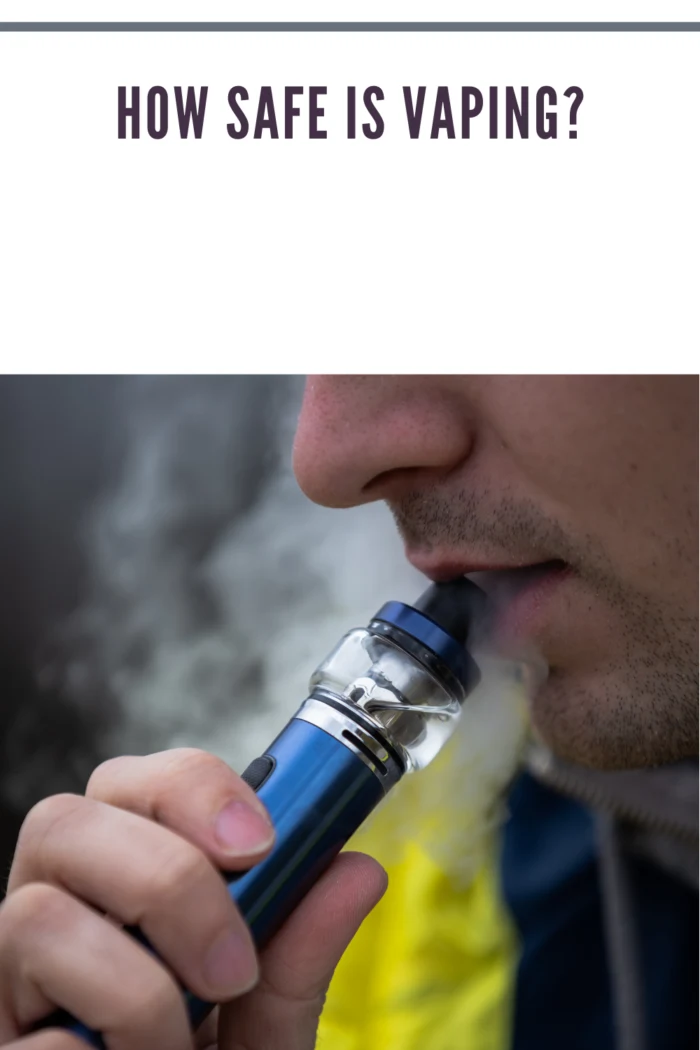
Can Vaping Help You Quit Smoking?
It seems that quitting cessation involves only not lighting up. Things would be much easier in this case. A smoker has a nicotine addiction that is a cause of withdrawal symptoms. They start within 30 minutes of your last use and reach a peak 2 to 3 days after quitting. But why do some quitters come back to their habit after months of a smoke-free life? As a smoker yourself, you know that the schedule of a puffer spins around smoke breaks. Getting used to the new, more intense schedule, especially at work, can be challenging. You may also have routine moments. For example, you may have a cup of coffee and think of having a few puffs of a cigarette as in the old days; or you may go to a party, have a drink, and feel like smoking. You’ll also need to look for a new way to manage your moods. In stressful situations, a craving for a cigarette may be very strong. Here’s where vaping comes in handy. Vape liquid contains nicotine. That helps to cope with withdrawal symptoms. Whenever you have an urge to light up, you can vape. The process and sensations are similar to smoking. That creates a feeling that you actually enjoy your smoking habit. You try your best to keep your family happy and healthy. So, leaving off smoking is not a big sacrifice for the sake of the people you love, as well for your own.
Vaping has been considered by some individuals as a potential aid to quit smoking traditional cigarettes. While research is still ongoing and the long-term effects of vaping are not yet fully understood, some studies suggest that vaping may have the potential to help certain smokers quit or reduce their cigarette consumption.
Here are a few points to consider:
- Nicotine replacement: Vaping devices typically deliver nicotine to users, which can help satisfy the nicotine cravings that are often associated with quitting smoking. By providing a controlled dose of nicotine, vaping may serve as a less harmful alternative to smoking traditional cigarettes.
- Similar behavioral aspects: Vaping mimics the physical act of smoking, including hand-to-mouth movements and inhalation-exhalation patterns. This can help satisfy the behavioral and sensory aspects of smoking that many smokers find difficult to overcome when quitting.
- Gradual reduction: Some individuals use vaping as a means to gradually reduce their nicotine intake over time. By starting with e-liquids that contain higher nicotine levels and gradually decreasing the nicotine concentration, individuals may be able to wean themselves off nicotine more comfortably.
- Smoking cessation support: Many smokers struggle with the addictive nature of cigarettes and find it challenging to quit without support. Vaping devices, combined with counseling, behavioral therapy, or support groups, may provide an additional tool in a comprehensive smoking cessation program.
However, it is important to note the following:
- Vaping is not FDA-approved for smoking cessation: As of my knowledge cutoff in September 2021, the U.S. Food and Drug Administration (FDA) has not approved e-cigarettes or vaping devices as smoking cessation aids. The FDA recommends approved methods such as nicotine replacement therapies (NRTs) or prescription medications for quitting smoking.
- Individual variation: Quitting smoking is a highly individualized process, and what works for one person may not work for another. Some individuals may find success in quitting smoking through vaping, while others may struggle to transition fully or may develop a dual-use pattern of both vaping and smoking.
- Potential for continued nicotine addiction: While vaping may provide a means to deliver nicotine without the harmful combustion associated with traditional cigarettes, it is important to recognize that vaping can still lead to nicotine addiction. It is advisable to work towards reducing nicotine intake over time and eventually aim for complete nicotine cessation.
If you are considering using vaping as a smoking cessation aid, it is recommended to consult with healthcare professionals or smoking cessation programs for guidance and support. They can provide personalized advice, help create a quitting plan, and explore other evidence-based methods to increase your chances of successfully quitting smoking.
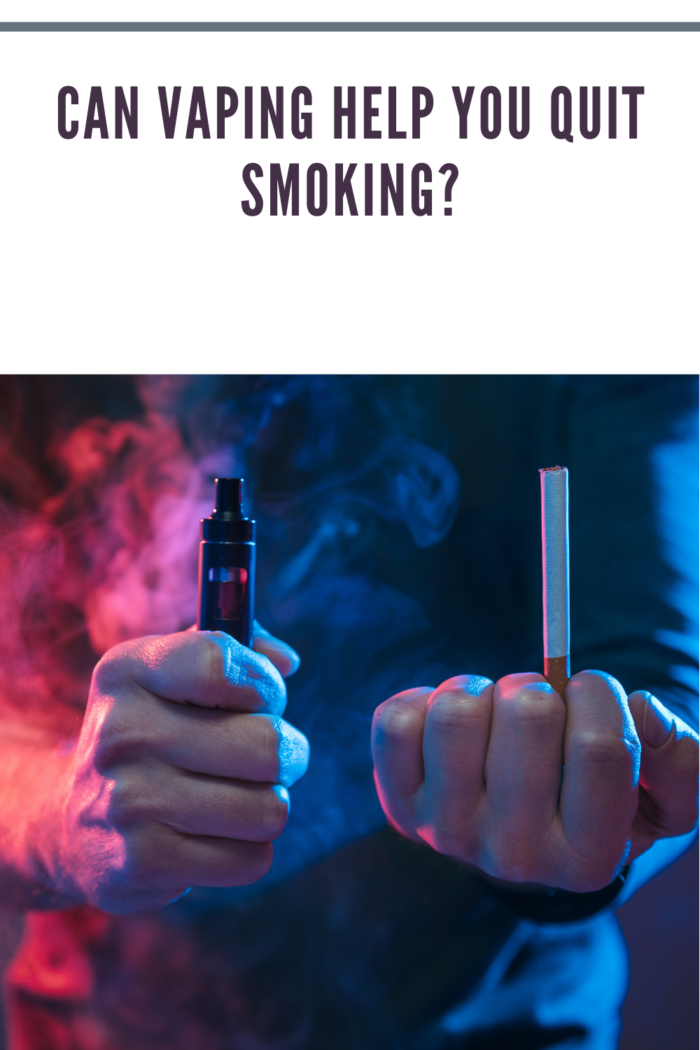
Conclusion:
Second-hand smoking poses a serious threat to the health of your family. The negative effects of second-hand smoke on children’s health, including the increased risk of SIDS, respiratory illnesses, ear infections, asthma, and childhood cancers, highlight the urgency of creating a smoke-free environment. Furthermore, your partner’s health can also be compromised by exposure to second-hand smoke, leading to conditions such as coronary heart disease, lung cancer, and other types of cancer.
While vaping is not without its own uncertainties, it is generally considered a safer alternative to smoking due to the absence of combustion and reduced exposure to harmful chemicals. However, ongoing research is necessary to fully understand the long-term effects. If you choose to explore vaping as a smoking cessation aid, it is essential to be well-informed about the potential risks and exercise caution.
Ultimately, quitting smoking is the most effective way to protect your family’s health. By adopting a smoke-free lifestyle and providing a safe and healthy environment, you demonstrate your commitment to the well-being of your loved ones and pave the way for a brighter and healthier future together.
